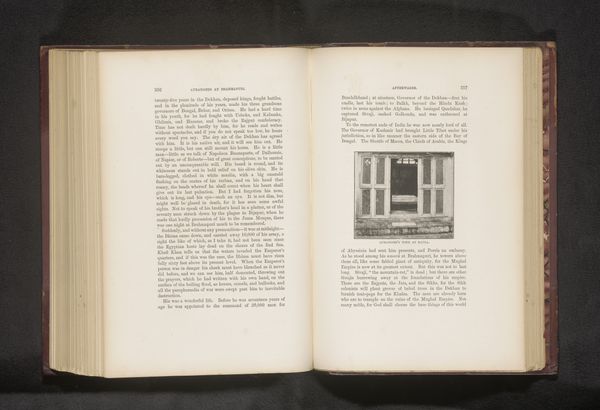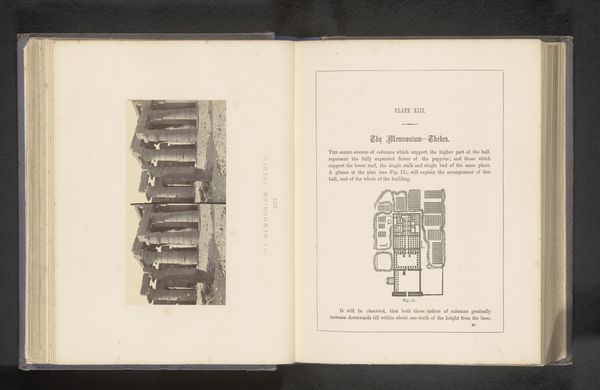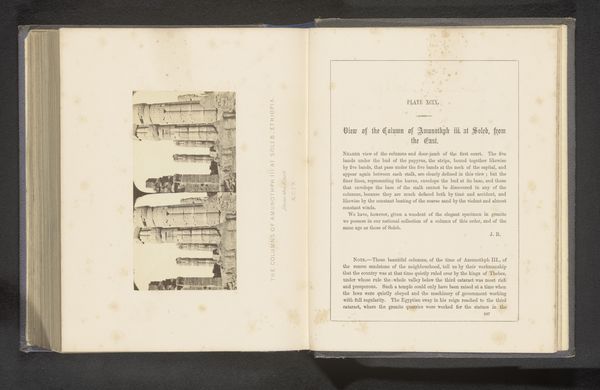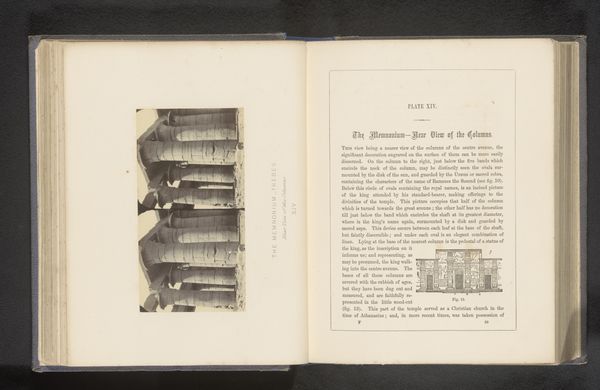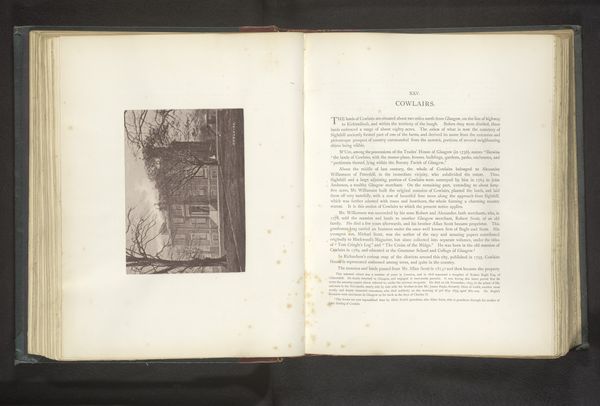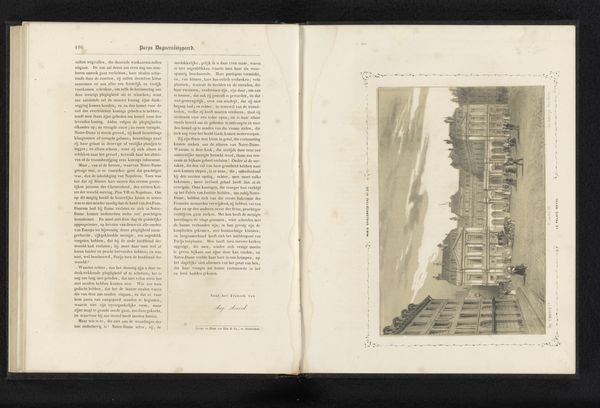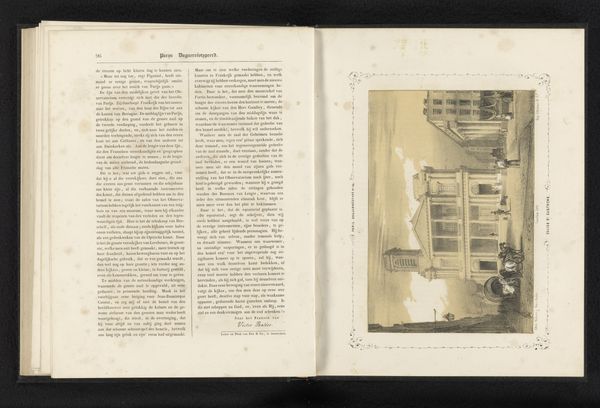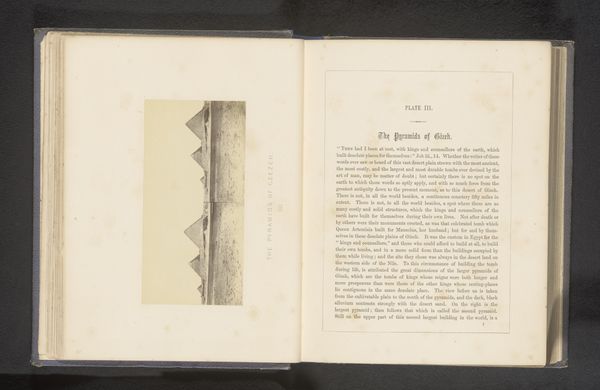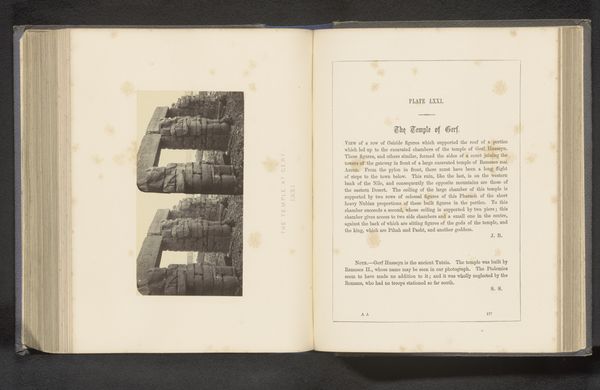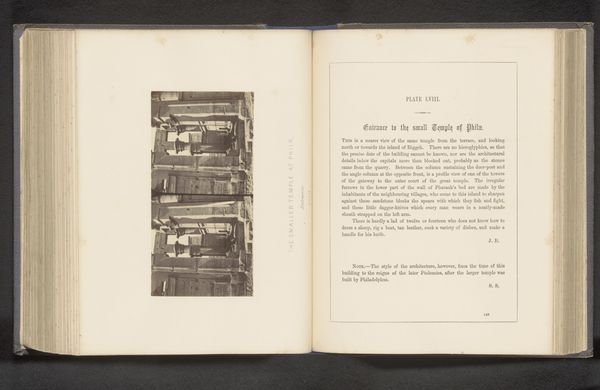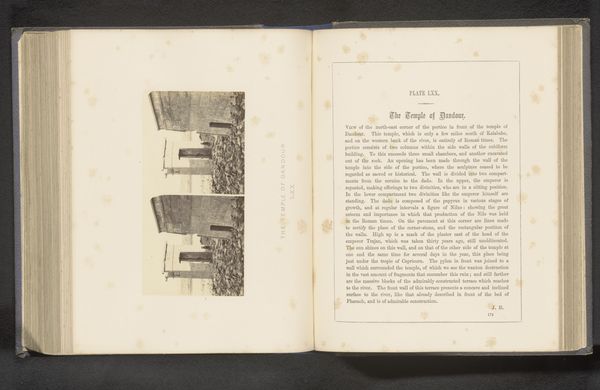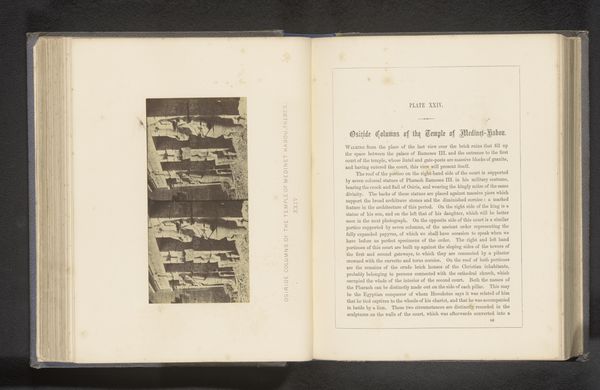
print, photography, gelatin-silver-print, albumen-print, architecture
# print
#
landscape
#
ancient-egyptian-art
#
photography
#
ancient-mediterranean
#
gelatin-silver-print
#
albumen-print
#
architecture
Dimensions: height 70 mm, width 145 mm
Copyright: Rijks Museum: Open Domain
Curator: This albumen print, "Tempel te Thebe," taken by Francis Frith before 1862, is part of the Rijksmuseum's collection and offers a stark view of ancient Egyptian architecture. What's your initial reaction? Editor: The repetition in the paired images gives a disorienting, almost claustrophobic feel, despite being an outdoor scene. It feels like being trapped within the stones. Curator: The architectural composition is quite interesting. Note how the stereoscopic format presents two slightly offset perspectives of what is the same space and structural form. What strikes you about this visual duplication? Editor: This repetition underscores how monumentality serves power. Replicating the image—almost echoing the duplicated architecture—highlights the imperial drive for control, where visual dominance mirrored political control of resources, labor, and representation of the Egyptian landscape. Curator: But consider the tonality—the print’s sepia hues emphasize texture and light, transforming the solid forms into almost ethereal shapes. Isn't that something beautiful on its own? Editor: But aren’t those “ethereal shapes” literally built on the backs of exploited labor? We can’t divorce Frith's aesthetic choices from the political realities of his time—British colonialism sought to legitimize its presence in Egypt through documenting, cataloging, and “possessing” its image. Curator: Photography itself as an emerging medium, presented a uniquely 'objective' lens. Frith's technical skill in capturing this ancient site demonstrates a specific artistry in photographic composition and execution. Editor: Sure, but even that supposed "objectivity" has a point of view. Photographs like these fueled Orientalist fantasies back home. These ruins became exotic souvenirs, stripped of their contemporary social context. The framing—both literally in the picture and figuratively in the public’s understanding—is controlled by a Western gaze. Curator: Still, observing the stark geometry offers an aesthetic pleasure that transcends the simple document. The angles, lines, and sheer monumentality of these ancient ruins provoke feelings of awe and wonder in and of themselves, divorced from history. Editor: I can concede that the formal presentation is well executed. And as for awe and wonder? Maybe those should be balanced with a recognition of the complexities embedded within this single image. Curator: Indeed, a full appreciation of such artifacts means that form, function, and feeling come together into something far more nuanced than any single viewpoint might capture alone.
Comments
No comments
Be the first to comment and join the conversation on the ultimate creative platform.
